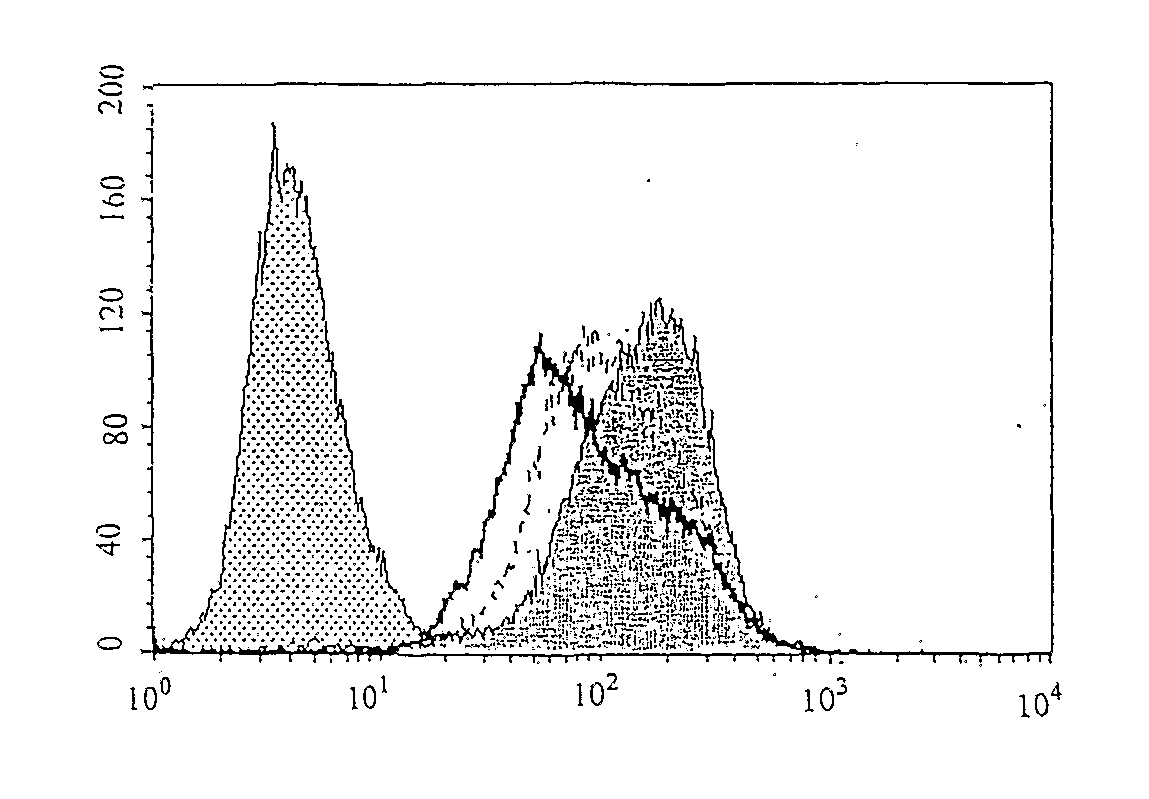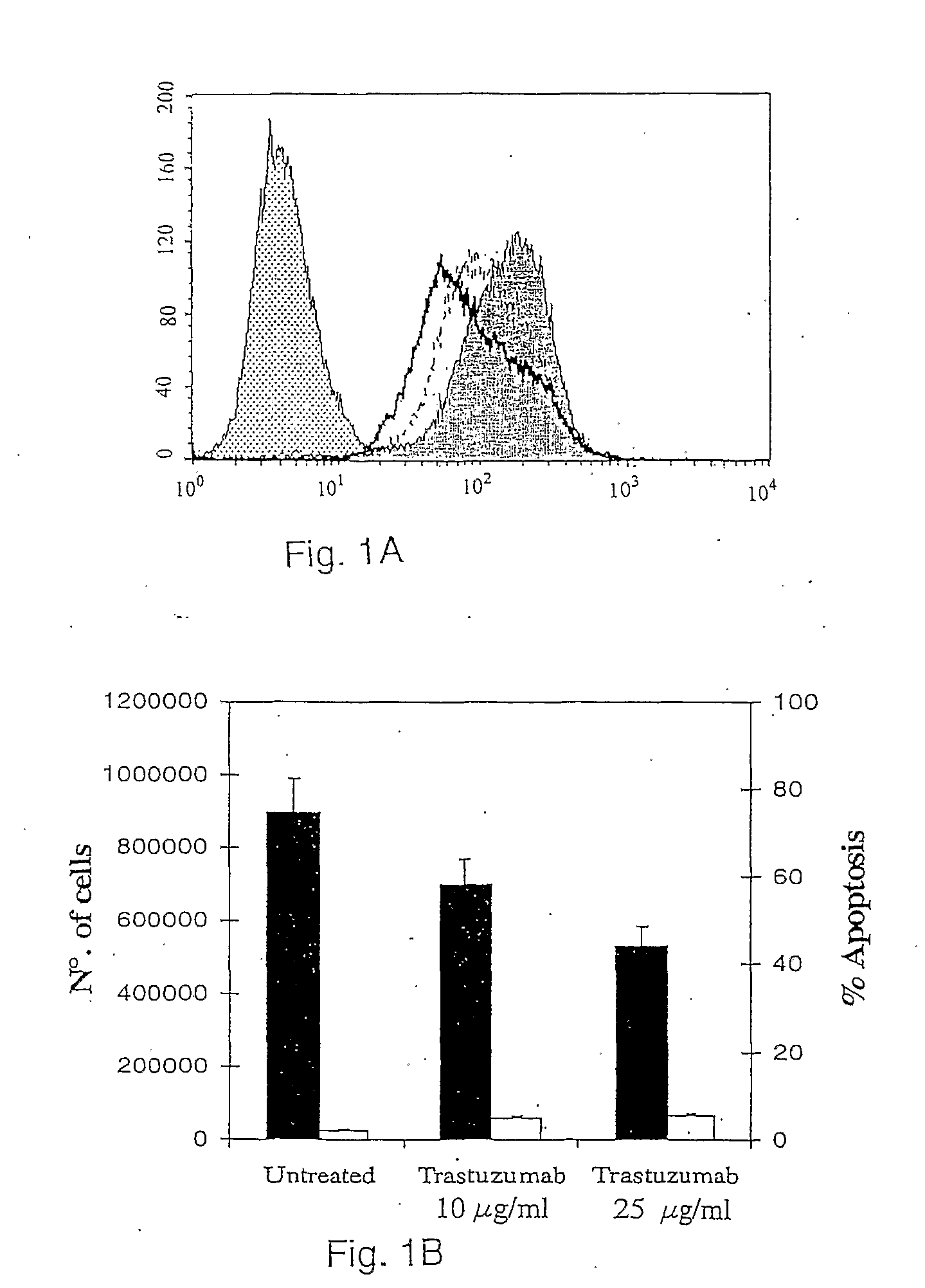Treatment of Cancer With a Combination of an Agent that Perturbs the EGF Signaling Pathway and an Oligonucleotide that Reduces Clusterin Levels
a technology of oligonucleotide and cancer, which is applied in the direction of antibody medical ingredients, drug compositions, peptides, etc., can solve the problem of detracting from the efficacy of the therapeutic agent's second effect, and achieve the effect of reducing the amount of clusterin and increasing the expression of protein clusterin
- Summary
- Abstract
- Description
- Claims
- Application Information
AI Technical Summary
Benefits of technology
Problems solved by technology
Method used
Image
Examples
example 1
[0076] Enhanced expression of clusterin after treatment with trastuzumab in BT474 HER-2 overexpressing breast cancer cells.
[0077] The human breast cancer cell line BT474, which overexpresses the HER-2 gene, was exposed to clinically relevant concentrations of trastuzumab. The treatment of BT474 cells with trastuzumab down-regulated HER-2 protein expression in a dose-dependent manner. Analysis by flow cytometry revealed that the mean channel of fluorescence decreased from 173 to 112 and 72 in the BT474 cells treated with 10 and 25 μg / ml of trastuzumab, respectively. FIG. 1A shows a cytofluorimetric analysis of HER-2 protein expression in BT474 cells untreated (gray area), and treated with 10 (thin line), 25 μg / ml (thick line) of trastuzumab for 48 h, and negative control (dotted area).
[0078] Trastuzumab-mediated reduction of HER-2 protein expression was accompanied by inhibition of BT474 cell growth without affecting apoptosis (FIG. 1B). The simultaneous analysis of number of viabl...
example 2
[0080] Effect of combined treatment with clusterin ASO and trastuzumab on BT474 cell growth rate.
[0081] The effect of treatment with oligonucleotides on clusterin protein expression was evaluated. BT474 cells were transfected with 300 or 500 nM clusterin ASO (Seq. ID No. 4 with MOE modifications)(or the same concentrations of its mismatch oligonucleotide as control, as described supra), and clusterin expression was analyzed by Western blot 48 h after treatment. Treatment of BT474 with 100 or 500 nM clusterin ASO for 6 h reduced clusterin protein expression by about 30 and 50% compared to mismatch control, respectively.
[0082] The analysis was performed 48 h after the end of treatment. The relative amount of the transferred clusterin protein was quantified and normalized to the corresponding HSP72 / 73 protein amount.
[0083] In contrast, clusterin levels were not affected by the 2-base mismatch (MM) control oligonucleotide at any of the used concentrations.
[0084] To determine whether...
example 3
[0087] Effect of combined treatment with clusterin ASO and trastuzumab on the induction of apoptosis.
[0088] Apoptosis was evaluated in BT474 cells exposed to the different treatments. FIG. 4 shows the cytofluorimetric analysis of the annexin V versus Pi staining performed in the BT474 untreated and treated with trastuzumab alone and in combination with Clusterin ASO or MM control oligonucleotide. Using the same treatment schedule described above, apoptosis (shown as the annexin V+ / PI− region of the dot plot panels) was observed only after combined treatment of Clusterin ASO plus trastuzumab. The percentage of annexin V+ / PI− cells was about 40% in the trastuzumab / clusterin combination and was less than 10% in all the other treatments.
PUM
| Property | Measurement | Unit |
|---|---|---|
| concentration | aaaaa | aaaaa |
| α | aaaaa | aaaaa |
| stability | aaaaa | aaaaa |
Abstract
Description
Claims
Application Information
 Login to View More
Login to View More - R&D
- Intellectual Property
- Life Sciences
- Materials
- Tech Scout
- Unparalleled Data Quality
- Higher Quality Content
- 60% Fewer Hallucinations
Browse by: Latest US Patents, China's latest patents, Technical Efficacy Thesaurus, Application Domain, Technology Topic, Popular Technical Reports.
© 2025 PatSnap. All rights reserved.Legal|Privacy policy|Modern Slavery Act Transparency Statement|Sitemap|About US| Contact US: help@patsnap.com



